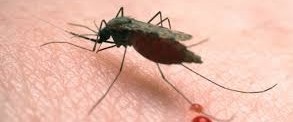Solomon T, Loha E, Deressa W, Gari T, Lindtjørn B (2019) Spatiotemporal clustering of malaria in southern-central Ethiopia: A community-based cohort study. PLoS ONE 14(9): e0222986. https://doi.org/10.1371/journal.pone.0222986
Introduction Understanding the spatiotemporal clustering of malaria transmission would help target interventions in settings of low malaria transmission. The aim of this study was to assess whether malaria infections were clustered in areas with long-lasting insecticidal nets (LLINs) alone, indoor residual spraying (IRS) alone, or a combination of LLINs and IRS interventions, and to determine the risk factors for the observed malaria clustering in southern-central Ethiopia.
Methods A cohort of 34,548 individuals residing in 6,071 households was followed for 121 weeks, from October 2014 to January 2017. Both active and passive case detection mechanisms were used to identify clinical malaria episodes, and there were no geographic heterogeneity in data collection methods. Using SaTScan software v 9.4.4, a discrete Poisson model was used to identify high rates of spatial, temporal, and spatiotemporal malaria clustering. A multilevel logistic regression model was fitted to identify predictors of spatial malaria clustering.
Results The overall incidence of malaria was 16.5 per 1,000 person-year observations. Spatial, temporal, and spatiotemporal clustering of malaria was detected in all types of malaria infection (P. falciparum, P. vivax, or mixed). Spatial clustering was identified in all study arms: for LLIN + IRS arm, a most likely cluster size of 169 cases in 305 households [relative risk (RR) = 4.54, P<0.001]; for LLIN alone arm a cluster size of 88 cases in 103 households (RR = 5.58, P<0.001); for IRS alone arm a cluster size of 58 cases in 50 households (RR = 7.15, P<0.001), and for control arm a cluster size of 147 cases in 377 households (RR = 2.78, P<0.001). Living 1 km closer to potential vector breeding sites increased the odds of being in spatial clusters by 41.32 fold (adjusted OR = 41.32, 95% CI = 3.79–138.89).
Conclusions The risk of malaria infection varied significantly between kebeles, within kebeles, and even among households in areas targeted for different types of malaria control interventions in low malaria transmission setting. The results of this study can be used in planning and implementation of malaria control strategies at micro-geographic scale.
